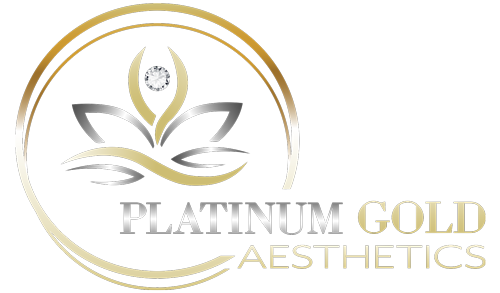Prevent Ingrown Hair Cysts: Your Comprehensive Guide to Safe Waxing

Unveiling the secrets to a successful, hair-free wax session, and how you can safeguard your skin against ingrown hair cysts.
For anyone who’s experienced the smooth satisfaction of a waxing session, the results are often worth the minimal discomfort during the process. But what happens when those pesky ingrown hairs turn from a minor irritation into a painful cyst? It's time to delve deep into the intricacies of waxing and understand how to prevent ingrown hair cysts.
In this comprehensive guide, you will learn safety measures, preparation steps, and aftercare tips that guarantee a silky smooth outcome without the lurking threat of ingrown hair cysts.
Understanding Ingrown Hair Cysts
Before we dive into the do’s and don’ts of waxing, let's understand what ingrown hair cysts are and why they can occur.
What Are Ingrown Hair Cysts?
An ingrown hair cyst is a hair that curls back on itself and grows into the skin instead of rising from it. This condition can occur to anyone but is frequently associated with the act of hair removal, particularly shaving and waxing.
What Causes Them?
Several factors can contribute to the development of ingrown hair cysts, including:
- Curly or coarse hair,
- Dead skin blocking hair follicles,
- Improper hair removal techniques leading to hair breakage,
- Tight clothing that traps hair against the skin,
- Bacterial infection.
Signs and Symptoms
Keep an eye out for:
- Pain and tenderness at the site,
- A red or pink bump that looks like a pimple,
- Pus inside the bump, which may point out of the skin, resembling a pimple.
Choose a Professional and Clean Environment
The starting point for a wax without regrets always lies in selecting the right salon for your hair removal needs. When booking a face wax, hygiene and the professional's expertise are non-negotiable.
Research Before You Book
Look for salons with a good reputation for cleanliness and where the technicians are certified and experienced. Get personal recommendations or read online reviews to gauge customer experiences.
Hygiene Is Key
Ensure the salon follows strict cleanliness protocols. Tools must be properly sterilized, and technicians should wear gloves. Any deviation from hygiene best practices can lead to infections, which are a hotbed for ingrown hair cysts.
Proper Pre-Wax Preparation
To pave the way for a successful wax, pre-wax care is as crucial as the waxing process itself.
Exfoliate and Hydrate
Regular exfoliation removes dead skin cells and helps free the hair to grow back out of the follicle. However, over-exfoliation can cause skin irritation, so find the balance and exfoliate the day before your appointment. Also, remember to hydrate your skin as it makes the hair removal process more comfortable and efficient.
Optimal Hair Length
Hair should be long enough for the wax to grip it, but not too long that it becomes painful. Ideally, about 1/4 inch in length is perfect for waxing.
Avoid Sun Exposure
Do not expose the area to be waxed to direct sunlight for at least 24-48 hours before your appointment. Sunburned or tanned skin is more sensitive and prone to damage during the waxing process.
During the Wax: What to Look For
As the waxing session commences, be mindful of the care the technician is taking.
Quality Wax and Technique
Use a high-quality wax that suits your skin type and the area being treated. The technique is equally crucial – too many reapplications of the wax can cause excessive trauma to the skin, potentially leading to ingrown hair cysts.
Communicate
Do not shy away from guiding the professional about your preferences and any past reactions to waxing procedures. Good communication can lead to better outcomes.
Post-Wax Care: The Key to Prevention
It doesn't end when the last strip of wax is removed. Post-wax care is perhaps the most important phase in the fight against ingrown hair cysts.
Keep it Clean
The waxed area is more susceptible to infection. Keep the area clean, and avoid touching it with dirty hands.
No Tight Clothes
Avoid wearing tight clothing that can chafe the skin and cause hairs to grow inwards.
Moisturize
Apply a post-wax lotion or aloe vera gel to soothe the skin. Moisturizing the area keeps the skin soft and prevents dead skin from blocking hair follicles.
Exfoliate Properly
Gently exfoliate the skin two days after your waxing session. Ensure it's gentle, as the skin in the waxed area is still sensitive. This step helps to ensure that the hair can grow back without obstruction.
Treat Any Ingrown Hairs Promptly
Should you notice an ingrown hair forming after your waxing session, treat it promptly to avoid it developing into a cyst. Use a warm compress and a sterile needle to gently release the hair.
When to Seek Medical Attention
If you notice persistent ingrown hairs, redness, swelling, increased pain, or discharge from the site, it's time to see a doctor. These could be signs of infection or a more severe condition that requires medical intervention.
Final Thoughts: A Future Free from Ingrown Hair Cysts
The key to enjoying your waxing sessions without the fear of ingrown hair cysts is a blend of informed decision-making and vigilant aftercare. By choosing the right professional, preparing your skin correctly, and following through with a dedicated post-wax regime, you can enjoy the long-lasting effects of waxing without the unwanted complications.
If you're looking for a face wax in Lake Mary, FL, consider Platinum Gold Aesthetics, where we prioritize your safety and satisfaction. Our certified technicians provide top-notch services in a clean, welcoming environment. Say goodbye to ingrown hair cysts and hello to smooth, glowing skin. Book your appointment today and experience the transformation for yourself.
